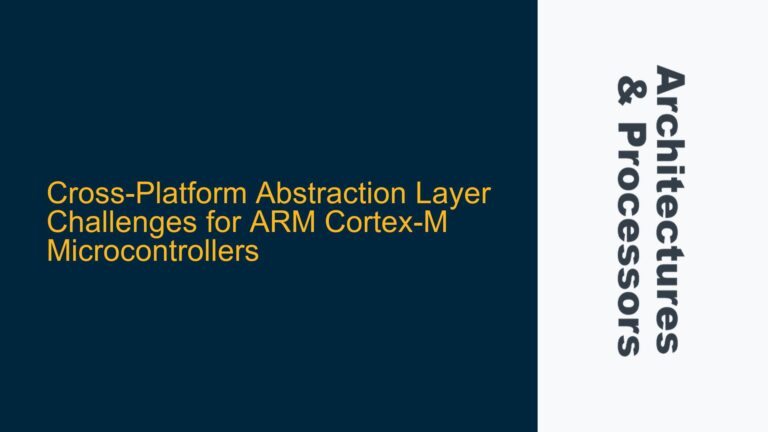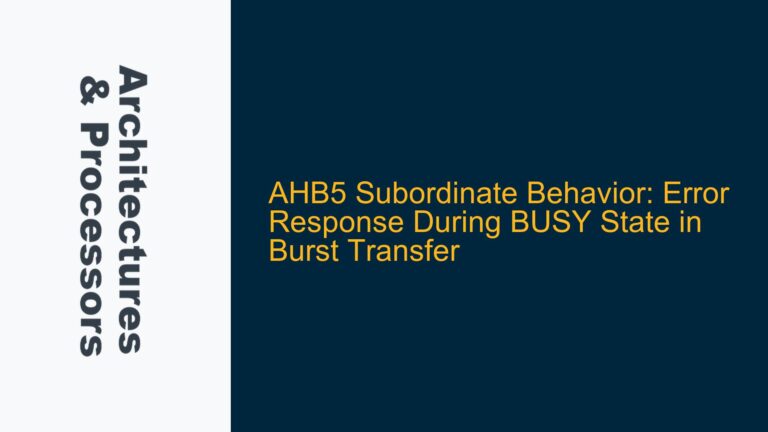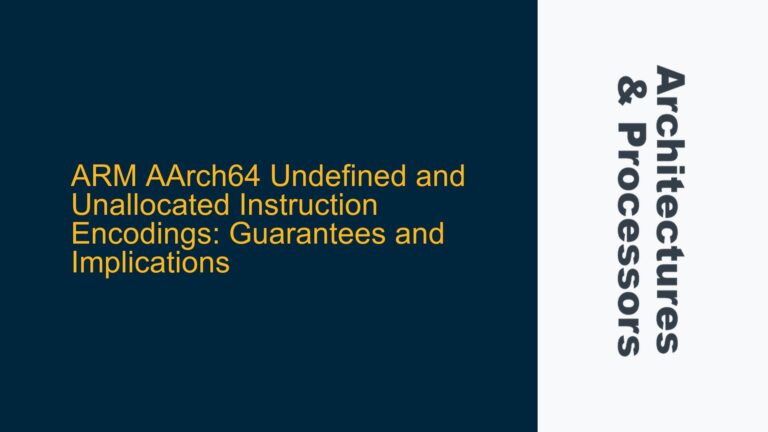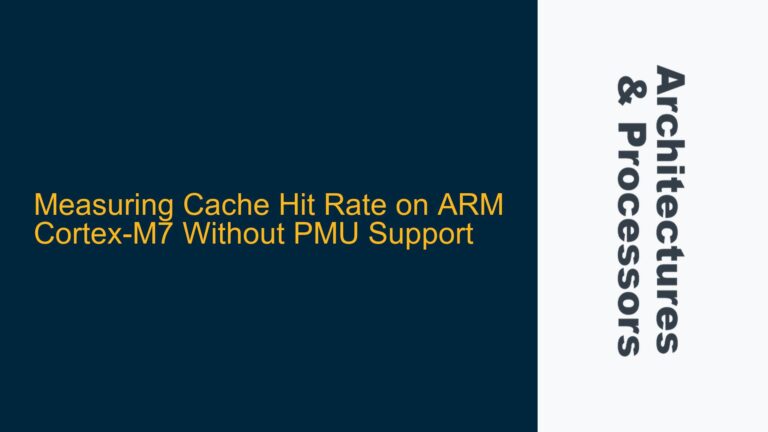ARMv8-M Memory Aliasing and Secure-Non-Secure Address Space Partitioning
The ARMv8-M architecture introduces a robust security model that partitions memory into Secure and Non-Secure address spaces. This partitioning is critical for implementing TrustZone technology, which isolates sensitive code and data from less trusted software. In the context of the FVP_MPS2_AEMv8M model, this partitioning is achieved through a combination of hardware mechanisms, including the Implementation Defined Attribution Unit (IDAU) and the Security Attribution Unit (SAU). The IDAU provides a fixed memory map that defines Secure and Non-Secure regions, while the SAU allows for further customization of these regions during runtime. A key feature of this architecture is the use of memory aliasing, where the same physical memory can be accessed through different address ranges, depending on the security context. This mechanism is implemented using a Memory Protection Controller (MPC), which dynamically maps memory pages between Secure and Non-Secure aliases.
The core issue revolves around understanding how the ARMv8-M architecture handles memory aliasing and Secure-Non-Secure partitioning, particularly in the context of loading a signed TF-M image into memory using the FVP_MPS2_AEMv8M model. The discussion highlights the behavior of memory aliasing, where changes to one address range (e.g., 0x100400) are reflected in another (e.g., 0x10100400), and vice versa. This behavior is a direct result of the memory aliasing mechanism, which uses bit 28 of the address line to determine the security domain. The IDAU defines the initial memory map, while the SAU allows for runtime reconfiguration of security attributes. The interaction between these components, along with the MPC, determines how memory is accessed and protected in Secure and Non-Secure states.
Memory Aliasing Mechanism and IDAU/SAU Configuration
The memory aliasing mechanism in ARMv8-M is a hardware-level feature that enables the same physical memory to be accessed through different address ranges, depending on the security context. This mechanism is implemented using a combination of the IDAU and SAU, along with an external Memory Protection Controller (MPC). The IDAU provides a fixed memory map that defines Secure and Non-Secure regions, while the SAU allows for runtime reconfiguration of these regions. The MPC is responsible for dynamically mapping memory pages between Secure and Non-Secure aliases.
In the FVP_MPS2_AEMv8M model, the IDAU uses bit 28 of the address line to partition memory into Secure and Non-Secure address spaces. For example, addresses in the range 0x10000000-0x1FFFFFFF are defined as Secure, while addresses in the range 0x00000000-0x0FFFFFFF are defined as Non-Secure. However, due to the memory aliasing mechanism, the same physical memory can be accessed through both Secure and Non-Secure aliases. For instance, the address 0x10100000 (Secure) and 0x00100000 (Non-Secure) map to the same physical memory location. This is achieved by masking bit 28 of the address line, effectively creating two aliases for the same memory block.
The SAU provides additional flexibility by allowing Secure software to override the IDAU-defined memory map. During system initialization, Secure software must configure the SAU to enable Non-Secure access to specific memory regions. This is done by setting the SAU_CTRL register, which controls the behavior of the SAU. The SAU_CTRL register includes two key bits: the enable bit (bit 0) and the ALLNS bit (bit 1). Setting the enable bit activates the SAU, while setting the ALLNS bit configures all memory regions as Non-Secure, unless overridden by the SAU region registers. The SAU region registers allow Secure software to define custom memory regions with specific security attributes, providing fine-grained control over memory partitioning.
The interaction between the IDAU, SAU, and MPC determines how memory is accessed and protected in Secure and Non-Secure states. The IDAU provides the initial memory map, the SAU allows for runtime reconfiguration, and the MPC enforces the memory aliasing mechanism. This combination of hardware components enables the ARMv8-M architecture to implement a robust security model that isolates Secure and Non-Secure code and data.
Implementing Secure Boot and Memory Partitioning in ARMv8-M
To implement Secure Boot and memory partitioning in ARMv8-M, developers must carefully configure the IDAU, SAU, and MPC. The process begins with loading the signed TF-M image into memory using the FVP_MPS2_AEMv8M model. The TF-M image consists of multiple components, including a header, Secure code (tfm_s.bin), and Non-Secure code (tfm_ns.bin). These components are loaded into specific memory regions, with the Secure code located at 0x10080400 and the Non-Secure code located at 0x10100400. Due to the memory aliasing mechanism, the Non-Secure code is also accessible at 0x100400, which is the Non-Secure alias of the same physical memory.
During system initialization, Secure software must configure the SAU to enable Non-Secure access to the appropriate memory regions. This involves setting the SAU_CTRL register to enable the SAU and configure the ALLNS bit. If the IDAU-defined memory map is sufficient for the application, setting the ALLNS bit to 1 will configure all memory regions as Non-Secure. However, if custom memory regions are required, the SAU region registers must be programmed to override the IDAU settings. This allows Secure software to define specific memory regions as Secure or Non-Secure, providing fine-grained control over memory partitioning.
The MPC plays a critical role in enforcing the memory aliasing mechanism. By masking bit 28 of the address line, the MPC ensures that the same physical memory can be accessed through both Secure and Non-Secure aliases. This allows Secure and Non-Secure software to share memory resources while maintaining isolation between the two security domains. However, the MPC can also be configured to mask out Non-Secure data from the Secure alias, reducing the risk of code injection attacks. This is particularly important for Normal memory, where data integrity and confidentiality must be maintained.
In summary, implementing Secure Boot and memory partitioning in ARMv8-M requires careful configuration of the IDAU, SAU, and MPC. The IDAU provides the initial memory map, the SAU allows for runtime reconfiguration, and the MPC enforces the memory aliasing mechanism. By understanding and leveraging these components, developers can implement a robust security model that isolates Secure and Non-Secure code and data, ensuring the integrity and confidentiality of sensitive information.
Troubleshooting Memory Aliasing and Security Configuration Issues
When working with ARMv8-M memory aliasing and security configuration, developers may encounter issues related to incorrect memory partitioning, unexpected behavior in Secure and Non-Secure states, or difficulties in configuring the SAU and MPC. These issues can often be traced back to misconfigurations in the IDAU, SAU, or MPC, or misunderstandings of the memory aliasing mechanism.
One common issue is the failure to properly configure the SAU during system initialization. If the SAU is not enabled or the ALLNS bit is not set correctly, memory regions may not be properly partitioned into Secure and Non-Secure spaces. This can result in Secure software being unable to access Non-Secure memory, or vice versa. To resolve this issue, developers should ensure that the SAU_CTRL register is configured correctly, with the enable bit set to 1 and the ALLNS bit set according to the desired memory map. If custom memory regions are required, the SAU region registers should be programmed to override the IDAU settings.
Another common issue is unexpected behavior in memory aliasing, where changes to one address range are not reflected in the corresponding alias. This can occur if the MPC is not properly configured to enforce the memory aliasing mechanism. Developers should verify that the MPC is correctly masking bit 28 of the address line, ensuring that the same physical memory is accessible through both Secure and Non-Secure aliases. Additionally, developers should check the MPC configuration to ensure that Non-Secure data is not being masked out from the Secure alias, unless this is the desired behavior.
Finally, developers may encounter issues related to the IDAU-defined memory map. If the IDAU is not configured correctly, memory regions may be incorrectly classified as Secure or Non-Secure, leading to access violations or unexpected behavior. Developers should carefully review the IDAU configuration and ensure that it aligns with the desired memory map. If necessary, the SAU can be used to override the IDAU settings and define custom memory regions with specific security attributes.
In conclusion, troubleshooting memory aliasing and security configuration issues in ARMv8-M requires a thorough understanding of the IDAU, SAU, and MPC. By carefully configuring these components and verifying their behavior, developers can ensure that memory is properly partitioned into Secure and Non-Secure spaces, and that the memory aliasing mechanism functions as intended. This will enable the implementation of a robust security model that isolates Secure and Non-Secure code and data, ensuring the integrity and confidentiality of sensitive information.






